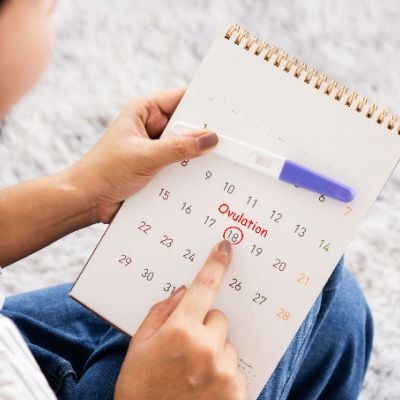 Embarking on the path to conception involves a complex interplay of physiological processes, and at the heart of this intricate dance is ovulation. This article delves into the multifaceted aspects of ovulation, exploring its significance, the biological mechanisms at play, and critical factors that influence this pivotal phase in a woman's menstrual cycle.
Embarking on the path to conception involves a complex interplay of physiological processes, and at the heart of this intricate dance is ovulation. This article delves into the multifaceted aspects of ovulation, exploring its significance, the biological mechanisms at play, and critical factors that influence this pivotal phase in a woman's menstrual cycle.
Understanding Ovulation
Defining Ovulation: Ovulation is a central event in the menstrual cycle, marking the release of a mature egg (ovum) from the ovaries. This release sets the stage for potential fertilization and subsequent pregnancy.
Timing within the Menstrual Cycle: Ovulation typically occurs midway through the menstrual cycle, usually lasting around 28 days. For the average cycle, ovulation takes place approximately 14 days before the onset of the next menstrual period.
Follicular Development: The journey of ovulation commences with the development of ovarian follicles. These follicles, sac-like structures within the ovaries, nurture and house immature eggs. One follicle, the dominant follicle, undergoes maturation, while others regress.
Surge in Luteinizing Hormone (LH): A surge in luteinizing hormone (LH) acts as the conductor in the ovulatory orchestra. This hormonal surge triggers the final maturation of the dominant follicle, culminating in the release of the mature egg from the ovary.
Release of the Egg: The rupture of the mature follicle results in the release of the egg into the fallopian tube, where it awaits the possibility of fertilization by sperm. This phase, known as ovulation, is a brief yet critical window for conception.
Signs and Symptomatic Cues
Changes in Basal Body Temperature (BBT): Monitoring basal body temperature is a standard method for tracking ovulation. A slight increase in BBT post-ovulation indicates the egg's release. Charting these temperature variations can help pinpoint the fertile window.
Cervical Mucus Changes: The quality and consistency of cervical mucus undergo distinctive changes during the menstrual cycle. Around ovulation, cervical mucus becomes clear, slippery, and stretchy—resembling egg whites. This fertile mucus facilitates sperm movement and survival in the reproductive tract.
Ovulatory Pain (Mittelschmerz): Some women experience mild pelvic discomfort or pain, known as mittelschmerz, during ovulation. This twinge or ache on one side of the lower abdomen coincides with the release of the egg and serves as a natural cue for ovulation.
Factors Influencing Ovulation
Menstrual Cycle Regularity: Regular menstrual cycles are often indicative of regular ovulation. Irregular cycles can be associated with irregular ovulation or anovulation, where ovulation does not occur.
Age and Ovarian Reserve: Age plays a pivotal role in ovulation and fertility. As women age, the quantity and quality of eggs in the ovaries decline, impacting the likelihood of successful ovulation and conception. This is particularly noteworthy as women approach their late 30s and 40s.
Hormonal Balance: The delicate balance of reproductive hormones, including estrogen and progesterone, influences ovulation. Conditions such as polycystic ovary syndrome (PCOS) or disruptions in hormonal signaling can affect the regularity of ovulation.
Ovulation and Fertility
Fertile Window: Understanding the fertile window— the days leading up to and including ovulation— is crucial for couples aiming to conceive. Timing intercourse during this window maximizes the chances of sperm encountering the released egg.
Conception Challenges: Difficulties in conceiving may arise from factors affecting ovulation, such as irregular cycles, hormonal imbalances, or age-related declines in fertility. Seeking guidance from healthcare professionals can help identify and address potential challenges.
Ovulation Disorders
Anovulation: Anovulation, the absence of ovulation, can contribute to fertility challenges. Conditions such as PCOS commonly lead to anovulation, necessitating medical intervention to restore regular ovulatory cycles.
Ovulatory Dysfunction: Disruptions in the hormonal signals governing ovulation can result in dysfunction. This may manifest as irregular ovulation or the absence of ovulation altogether.
Nurturing Reproductive Health
Nutrition and Exercise: Maintaining a balanced diet and engaging in regular physical activity contribute to overall health, influencing the regularity of ovulation. Excessive exercise or extremes in body weight can impact hormonal balance and ovulatory function.
Stress Management: Chronic stress can disrupt hormonal patterns, potentially affecting ovulation. Stress management techniques like mindfulness and relaxation can promote reproductive well-being.
Conclusion
In the intricate tapestry of reproductive health, ovulation emerges as a natural symphony, orchestrating the delicate dance of fertility. Understanding the mechanisms, recognizing symptomatic cues, and considering the factors influencing ovulation empower individuals and couples on their conception journey. As a pivotal phase in the menstrual cycle, ovulation embodies the promise of new beginnings and the potential to create life—a testament to the extraordinary complexity and beauty inherent in the human reproductive journey.
Disclaimer:
The information on this website is provided for educational and information purposes only and is not medical advice. Always consult with a licensed medical provider and follow their recommendations regardless of what you read on this website. If you think you are having a medical emergency, dial 911 or go to the nearest emergency room. Links to other third-party websites are provided for your convenience only. If you decide to access any of the third-party websites, you do so entirely at your own risk and subject to the terms of use for those websites. Neither Sample OB/GYN Clinic, nor any contributor to this website, makes any representation, express or implied, regarding the information provided on this website or any information you may access on a third-party website using a link. Use of this website does not establish a doctor-patient relationship. If you would like to request an appointment with a health care provider, please call our office at (555) 555-5555.


